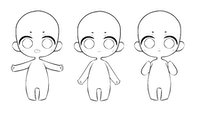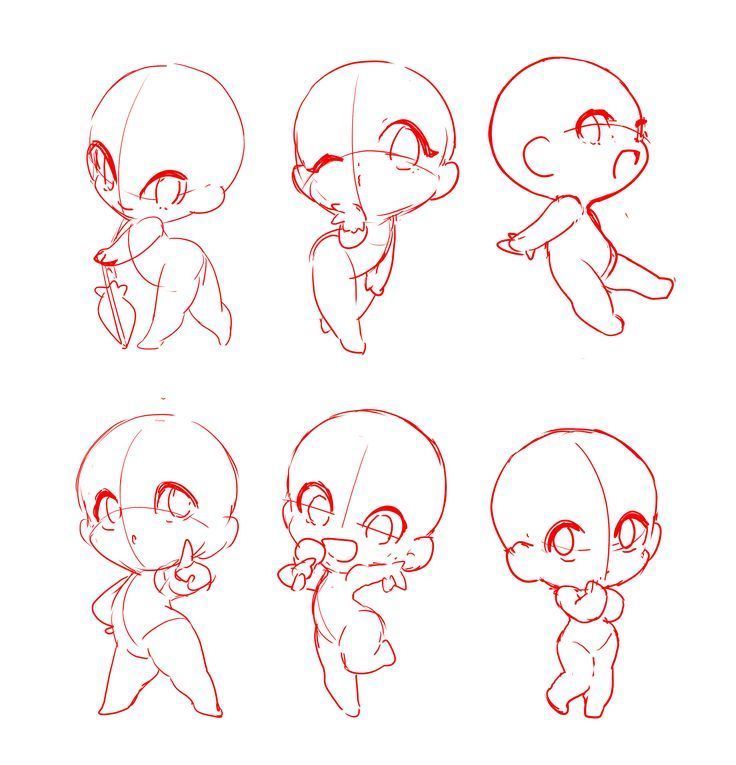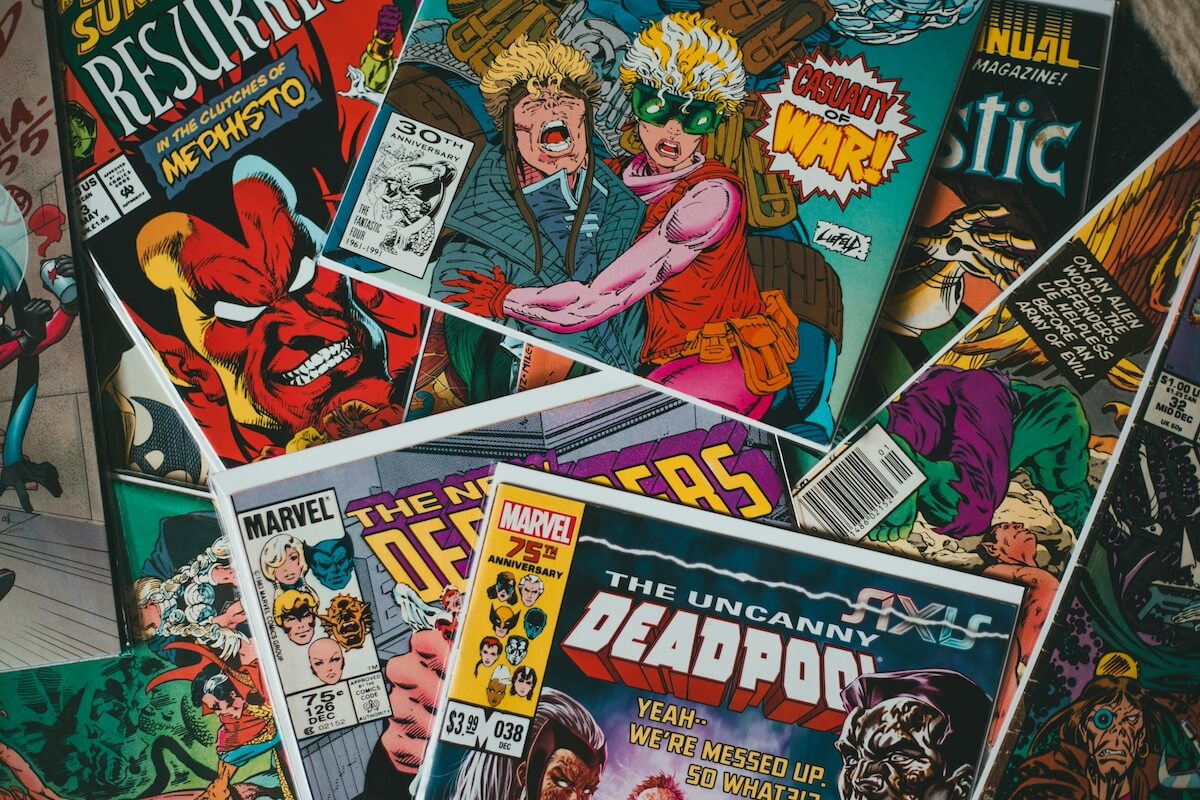What are chibi poses?
Chibi poses are stylized ways of drawing mini versions of characters, usually from anime or manga. Chibi characters are typically between two and four heads tall, and have large heads, big eyes, and small bodies. They are often used to create a cute or funny atmosphere, or for merchandise such as keyrings or dolls.
You can find many examples of chibi poses online, such as on ComicArtVille.com, PoseMy.Art or DeviantArt. These websites provide pose references that you can use to draw your own chibi characters. You can also play with the scene to create the exact pose reference you need for your drawing.
Popular chibi characters
Some popular chibi characters are:
- Umaru Doma from Himouto! Umaru-chan, who has a secret identity as a lazy and spoiled otaku.
- Reborn from Katekyo Hitman Reborn!, who is an infant and a dangerous hitman.
- Nezuko Kamado from Demon Slayer: Kimetsu no Yaiba, who is a demon girl with a bamboo gag in her mouth.
- Taiga Aisaka from Toradora!, who is a short and fierce tsundere.
- Tony Tony Chopper from One Piece, who is a reindeer that ate a devil fruit and became a doctor.
- Isekai Quartet Characters from Isekai Quartet, who are chibi versions of characters from various isekai anime such as Re:Zero, Konosuba, Overlord, and The Saga of Tanya the Evil.
- Chibiusa Tsukino from Sailor Moon, who is the daughter of Usagi and Mamoru from the future.
- Ika Musume from Squid Girl, who is a squid girl who tries to invade the surface world but ends up working at a beach house.
- Index Librorum Prohibitorum from A Certain Magical Index, who is a nun who has 103,000 forbidden books in her memory.
- Shana from Shakugan no Shana, who is a red-haired warrior who fights against monsters that consume human existence.
Create a chibi character – step by step
To draw a chibi character with, you need to follow some basic steps:
- Start with a large circle for the head, which should be the same size as the rest of the body. You can also add a jawline if you want.
- Draw two intersecting lines inside the circle to help you place the facial features. The horizontal line should be in the lower third or quarter of the circle.
- Draw two wide eyes on the horizontal line, leaving a gap between them. The eyes should have round tops, large pupils and irises, and white circles for reflections. You can also add eyelashes or eyebrows if you like.
- Draw a small mouth near the bottom of the circle, using a simple line, circle, or triangle. You can also add teeth or tongue for more detail. The mouth should show the character’s emotion.
- Draw a small nose below the eyes, using a dot or a curve. The nose should be no bigger than the mouth.
- Draw the hair around the head, using simple shapes and curves. You can also add accessories like bows, hats, or ears. The hair should match the character’s personality and style.
Create a chibi character – time to move on to the body
- Draw the body below the head, using a rectangle or an oval for the torso and circles for the shoulders and hips. The body should be small and simple compared to the head.
- Draw the arms and legs, using cylinders or ovals for the limbs and circles for the joints. The arms and legs should be short and chubby. You can also add hands and feet, using simple shapes like ovals or triangles.
- Draw the clothes over the body, using curves and folds to show the fabric. You can also add details like buttons, pockets, or patterns. The clothes should fit the character’s theme and mood.
- Erase the guidelines and add some shading and color to your chibi character. You can use soft colors and gradients to make your character look cute and lively.
Now you are ready to move on to the next step. The base chibi poses them selves.
Draw chibi poses – tutorial

To draw chibi poses, you need to follow some basic steps:
- Start with a skeleton for the pose, using simple shapes and lines to show the head, torso, limbs, and joints. You can use circles for the head, shoulders, hips, elbows, and knees, and lines for the neck, spine, arms, and legs. The skeleton should be small and simple compared to a normal human skeleton.
- Adjust the proportions of the skeleton according to the height of your chibi character. Chibi characters can be anywhere from two to four heads tall, but a common proportion is three heads tall. This means that the head is one-third of the total height, and the body is two-thirds. You can divide the body into four equal parts: the chest, the waist, the thighs, and the lower legs. The arms should be slightly longer than the body.
Draw chibi poses – second part of tutorial and movement
- Add some curves and details to the skeleton to make it look more like a chibi body. You can round off the corners of the torso and limbs, and add some thickness to the chest, waist, hips, thighs, and lower legs. You can also add hands and feet, using simple shapes like ovals or triangles. The hands and feet should be small and chubby.
- Draw the clothes over the body, using curves and folds to show the fabric. You can also add details like buttons, pockets, or patterns. The clothes should fit the character’s theme and mood.
- Erase the skeleton and add some shading and color to your chibi pose. You can use soft colors and gradients to make your character look cute and lively.
You can find more tips and examples on how to draw chibi poses on these websites:
- Chibi Poses | PoseMy.Art
- Easy Steps to Creating Chibi Characters | Art Rocket – CLIP STUDIO
- Chibi poses reference (chibi base set #1) – DeviantArt
Other than that, you can also use these websites to find pose references that you can use to draw your own chibi characters. You can play with the scene to create the exact pose reference you need for your drawing.
Base chibi poses
Base chibi poses are simplified and generic poses that you can use to draw chibi characters. They are usually drawn with basic shapes and lines, without any details or expressions. You can use base chibi poses as references or templates to create your own chibi characters, by adding features, clothes, accessories, and colors. Base chibi poses can help you save time and effort, as well as improve your proportions and anatomy skills.
Some tips for using base chibi poses are:
- Choose a base chibi pose that matches the mood and personality of your character. For example, if your character is happy and energetic, you can use a jumping or dancing pose. If your character is shy and timid, you can use a sitting or hiding pose.
- Customize the base chibi pose to make it more unique and original. You can change the angle, perspective, or direction of the pose. You can also add or remove elements, such as hands, feet, hair, or clothes.
- Use the base chibi pose as a guide, not a rule. You don’t have to follow the base chibi pose exactly, as long as you keep the basic proportions and shapes. You can also modify the base chibi pose to suit your style and preference.
Cute poses
Cute chibi poses are poses that make chibi characters look adorable and appealing. They are usually poses that show the character’s emotion, personality, or action in a fun or playful way. Cute chibi poses can also use props, accessories, or effects to enhance the mood and atmosphere of the character.
Some tips for creating cute chibi poses are:
- Choose a cute chibi pose that matches the mood and personality of your character. For example, if your character is happy and cheerful, you can use a smiling or jumping pose. If your character is shy and timid, you can use a blushing or hiding pose.
- Customize the cute chibi pose to make it more unique and original. You can change the angle, perspective, or direction of the pose. You can also add or remove elements, such as hands, feet, hair, or clothes.
- Use the cute chibi pose as a guide, not a rule. You don’t have to follow the cute chibi pose exactly, as long as you keep the basic proportions and shapes. You can also modify the cute chibi pose to suit your style and preference.
Female poses
Female chibi poses are poses that make female chibi characters look cute and appealing. They are usually poses that show the character’s emotion, personality, or action in a feminine or girly way. Female chibi poses can also use props, accessories, or effects to enhance the mood and atmosphere of the character.
Some tips for creating female chibi poses are:
- Choose a female chibi pose that matches the mood and personality of your character. For example, if your character is sweet and gentle, you can use a smiling or hugging pose. If your character is sassy and confident, you can use a winking or hands-on-hips pose.
- Customize the female chibi pose to make it more unique and original. You can change the angle, perspective, or direction of the pose. You can also add or remove elements, such as hands, feet, hair, or clothes.
- Use the female chibi pose as a guide, not a rule. You don’t have to follow the female chibi pose exactly, as long as you keep the basic proportions and shapes. You can also modify the female chibi pose to suit your style and preference.
Popular poses
Some popular base chibi poses are:
- Sitting with knees drawn up: This pose is cute and relaxed, and can show the character’s mood by how they hug their knees or look at the viewer. You can also add props like a book, a phone, or a plushie to make the pose more interesting.
- Standing with hands on hips: This pose is confident and energetic, and can show the character’s personality by how they tilt their head or smile. You can also add accessories like a hat, a scarf, or a backpack to make the pose more stylish.
- Lying down with head propped up on one arm: This pose is casual and playful, and can show the character’s emotion by how they curl their legs or wink. You can also add elements like a pillow, a blanket, or a snack to make the pose more cozy.
- Jumping in the air: This pose is dynamic and cheerful, and can show the character’s excitement by how they spread their arms or scream. You can also add effects like sparkles, hearts, or stars to make the pose more lively.
- Punching or kicking: This pose is action-packed and cool, and can show the character’s strength by how they bend their elbows or knees. You can also add details like sweat, dust, or impact lines to make the pose more dramatic.
How long it takes to learn the skill
There is no definitive answer to how long it takes to learn how to draw chibis, as it depends on many factors, such as your previous drawing experience, your learning style, your practice frequency, and your personal goals. However, some general tips to speed up your learning process are:
- Start with the basics and master the proportions, shapes, and features of chibi characters.
- Study different styles and examples of chibi characters and try to imitate them or draw them in your own way.
- Experiment with different expressions, poses, outfits, and accessories for your chibi characters and see what works best for you.
- Practice regularly and consistently, and don’t be afraid to make mistakes or try new things.
- Seek feedback and advice from other artists or online communities, and learn from their critiques and suggestions.
- Have fun and enjoy the process of creating cute and fun chibi characters!
If you follow these tips and practice diligently, you should be able to learn how to draw chibis in a relatively short amount of time. However, remember that learning is a lifelong journey, and there is always room for improvement and innovation. Keep drawing and keep improving!
Common mistakes – how to avoid them
- Making the head too small or too big: The head is one of the most important features of a chibi character, as it shows their expression and personality. However, if the head is too small or too big compared to the body, it can make the character look unbalanced or unnatural. A good rule of thumb is to make the head about one-third of the total height of the character, and adjust it slightly depending on the style and mood you want to convey.
- Making the limbs too long or too short: The limbs are another important feature of a chibi character, as they show their movement and action. However, if the limbs are too long or too short compared to the body, it can make the character look awkward or stiff. A good rule of thumb is to make the arms slightly longer than the body, and the legs about half of the body length. You can also bend the elbows and knees to create more dynamic poses.
More of these mistakes
- Making the eyes too small or too far apart: The eyes are one of the most expressive features of a chibi character, as they show their emotion and mood. However, if the eyes are too small or too far apart compared to the head, it can make the character look dull or unfocused. A good rule of thumb is to make the eyes wide and round, and place them on the lower third or quarter of the head. You can also add details like eyelashes, eyebrows, and reflections to make the eyes more lively.
- Making the clothes too loose or too tight: The clothes are one of the most distinctive features of a chibi character, as they show their style and theme. However, if the clothes are too loose or too tight compared to the body, it can make the character look sloppy or uncomfortable. A good rule of thumb is to make the clothes fit snugly but not tightly over the body, and add curves and folds to show the fabric. You can also add details like buttons, pockets, and patterns to make the clothes more interesting.



